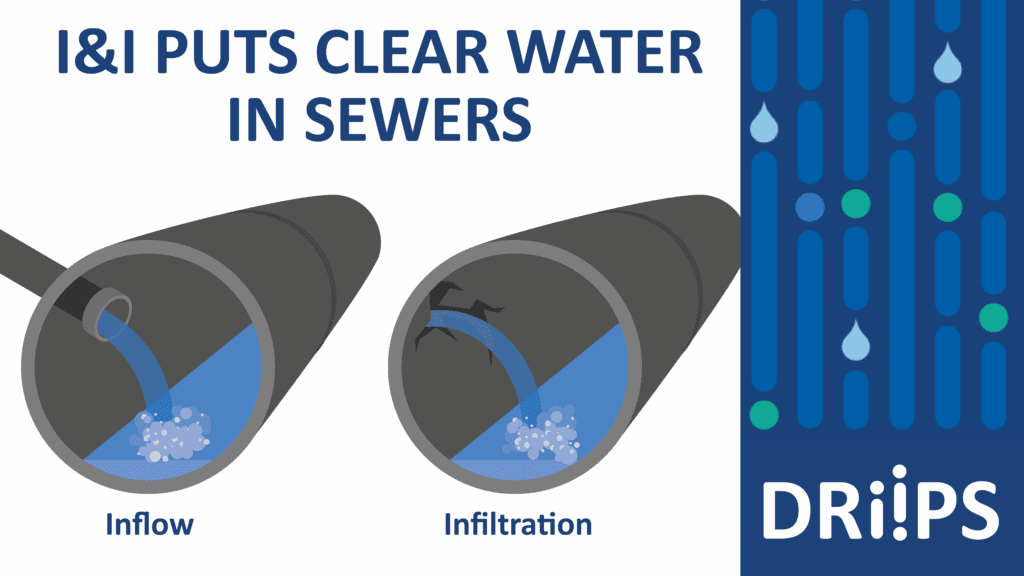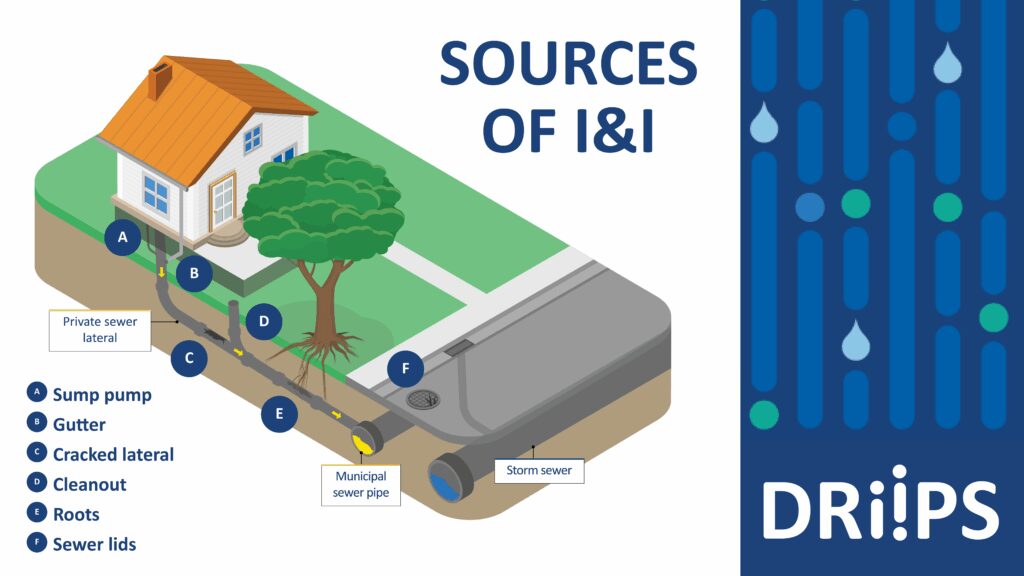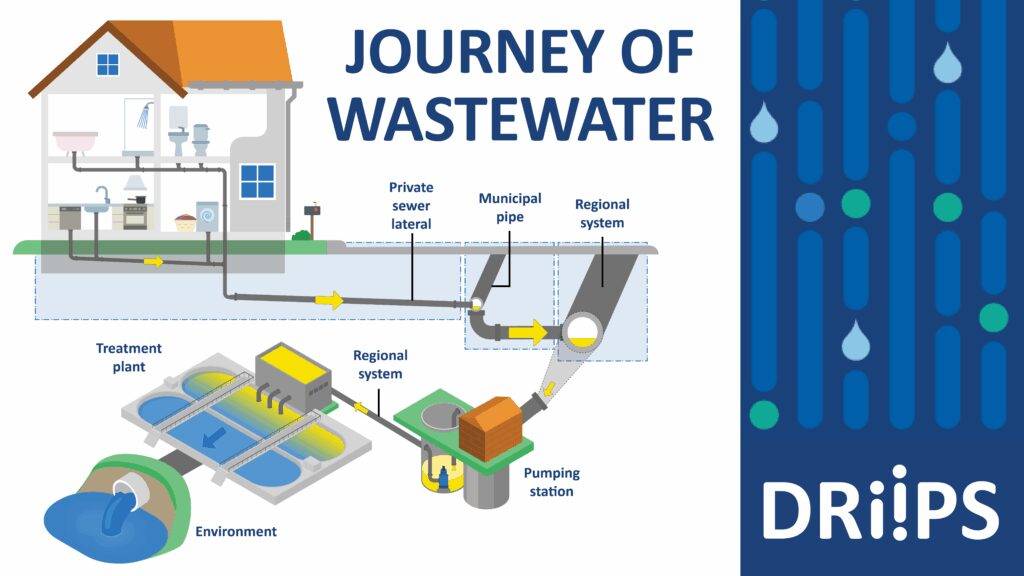DRIIPS: Disconnect and Reduce Inflow and Infiltration to Private Sewers

Resources and communication materials designed to help you reduce clear water in sewers
DRIIPS, short for Disconnect and Reduce Inflow and Infiltration to Private Sewers, is a regional program to support our customer communities with reducing clear water in the wastewater system. DRIIPS program materials share helpful information with local residents and business owners about inflow and infiltration, wastewater treatment, private sewer lateral ownership and connections to sump pumps.
One goal of the DRIIPS program is to provide resources to aid municipalities and other interested parties in educating residents and property owners on the importance of reducing inflow and infiltration, or I&I, as well as providing tips and strategies to make it happen. After gathering feedback directly from our customer communities, the District heard that communities wanted support in material creation and a program that they could feel ownership of. The resulting DRIIPS Communications Toolkit includes 1-page flyers, 1/3-page billing inserts, blog articles for digital outreach and images and content for social media outreach.
Shortcuts to topics: I&I Overview and Sources | I&I Capacity and Reduction | Sewer Laterals and Inspection | Sump Pumps and Setup | Collection and Treatment
I&I Overview and Sources
- Blog article: What is inflow and infiltration (I&I)?
- 1-page flyer: I&I Overview
- 1/3-page billing insert: I&I Overview (3-up on page)
- Social graphic – overview: 1×1 square png
- Social graphic – overview: 16×9 landscape png
Social copy – overview option A:
How is inflow different than infiltration?
–> Inflow is stormwater or surface water that enters the wastewater system through improperly connected sump pumps or downspouts that drain to sanitary sewers.
–> Infiltration is groundwater that enters the sanitary sewer through damaged underground pipes and sewer laterals.
Both types of I&I put unnecessary stress and cost on the system, while decreasing capacity. #DRIIPS Learn more: madsewer.org/ii-overview
Social copy – overview option B:
When clear water comes into sewer pipes from inflow and infiltration (I&I), it puts unnecessary stress and cost on the system, while decreasing capacity. #DRIIPS madsewer.org/ii-overview
- Social graphic – sources: 1×1 square png
- Social graphic – sources: 16×9 landscape png
Social copy – sources option A:
When clear water, from rain or groundwater, enters the wastewater system, it’s treated unnecessarily. This clear water, also called inflow and infiltration or I&I, comes from improper connections or damaged sewer laterals on your property. #DRIIPS
See how you can help reduce I&I to save costs and lower risks of sewer overflows: madsewer.org/ii-overview
Social copy – sources option B:
Learning about sources of inflow and infiltration (I&) can help us all save on treatment costs and lower the risk of sewer overflows in homes and communities. #DRIIPS madsewer.org/ii-overview
I&I Capacity and Reduction
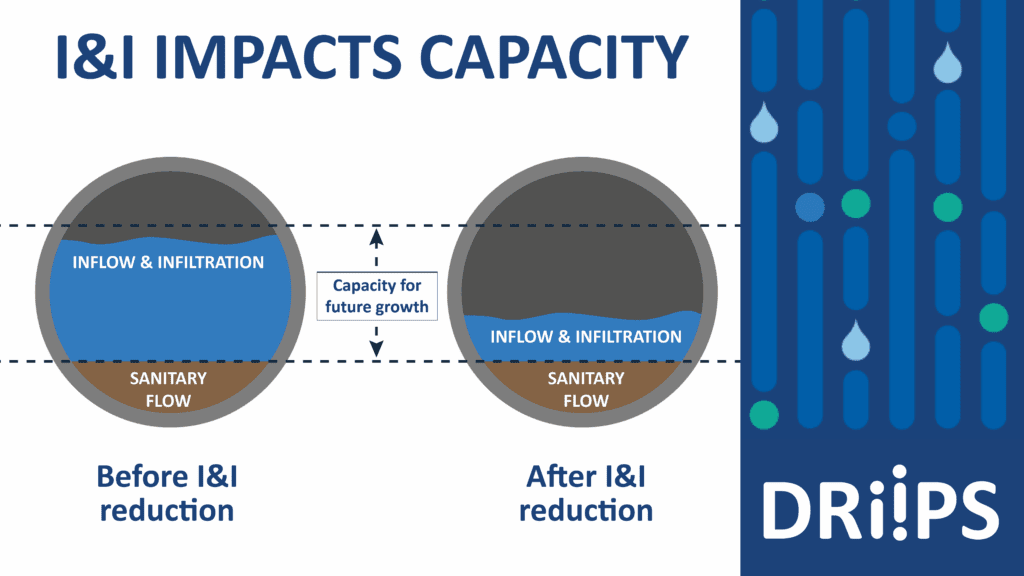
- Blog article: What can be done to reduce inflow and infiltration?
- 1-page flyer: I&I Reduction
- 1/3-page billing insert: I&I Reduction (3-up on page)
- Social graphic – capacity: 1×1 square png
- Social graphic – capacity: 16×9 landscape png
Social copy – capacity option A:
When clear water (rain or groundwater) enters the system, it’s treated unnecessarily at significant cost. Inflow and infiltration (I&I) also limits pipe capacity and increases the risk of wastewater overflows in communities.
Be sure to inspect your sewer laterals, sump pumps and gutters for condition and proper connections. #DRIIPS Learn more: madsewer.org/ii-reduction
Social copy – capacity option B:
When inflow and infiltration (I&I) allows clear water to enter the wastewater system, it limits pipe capacity, increases risks of sewer overflows and increases costs of treatment. #DRIIPS madsewer.org/ii-reduction
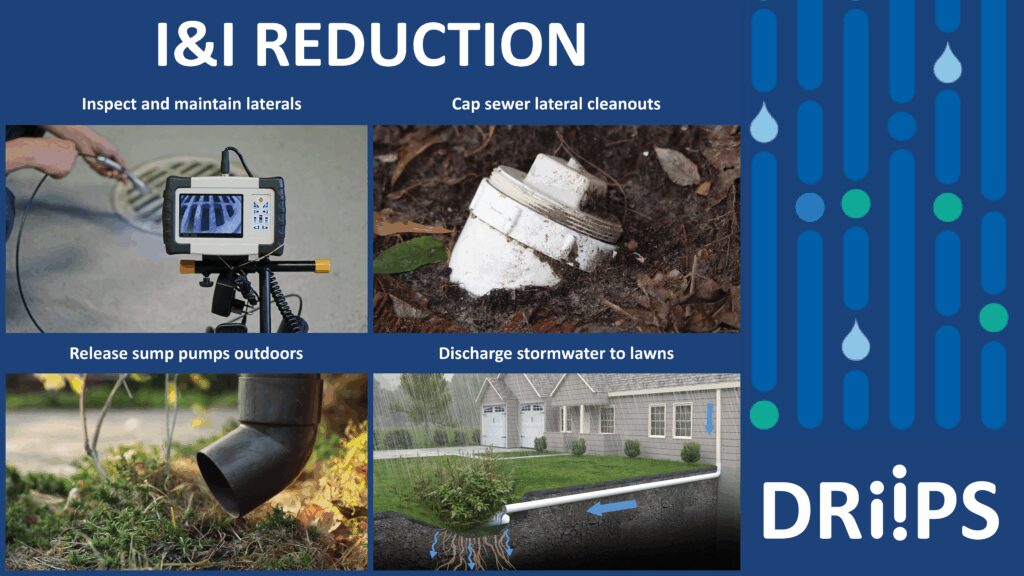
- Social graphic – reduction: 1×1 square png
- Social graphic – reduction: 16×9 landscape png
Social copy – reduction option A:
Inflow and infiltration (I&I) is clear water, from rain or groundwater, that enters the wastewater system and is treated unnecessarily. It comes from improper connections or damaged sewer laterals on your property. Addressing these areas can help reduce I&I, saving costs and lowering risks of sewer overflows. #DRIIPS Learn more: madsewer.org/ii-reduction
Social copy – reduction option B:
Save costs and reduce risks of sewer overflow by addressing inflow and infiltration (I&I) from improper connections and/or damaged sewer laterals on your property. #DRIIPS madsewer.org/ii-reduction
Sewer Laterals and Inspection
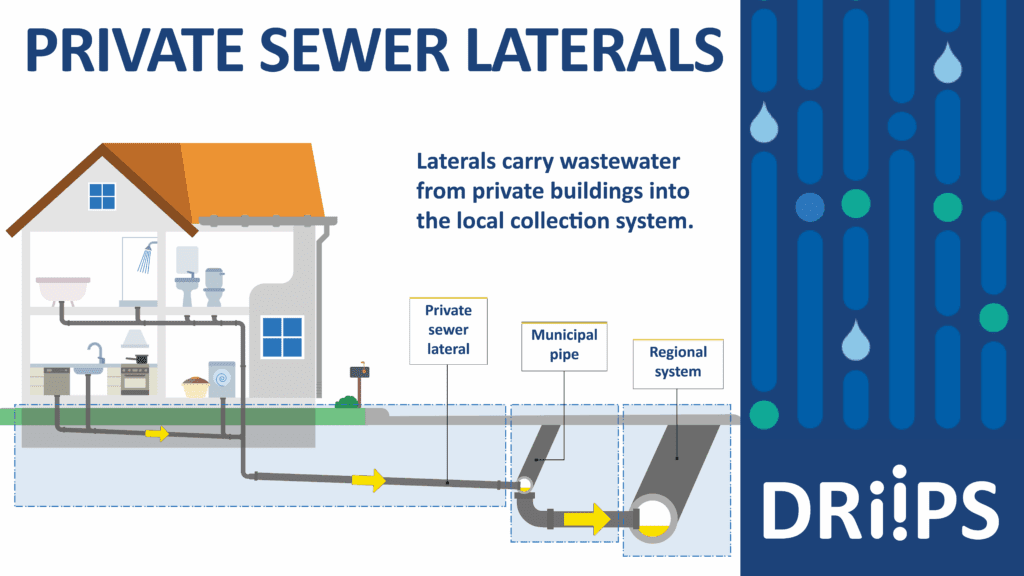
- Blog article: What is a private sewer lateral?
- 1-page flyer: Private Sewer Laterals
- 1-page flyer: Sewer Backups: What to Do
- 1/3-page billing insert: Private Sewer Laterals (3-up on page)
- Social graphic – laterals: 1×1 square png
- Social graphic – laterals: 16×9 landscape png
Social copy – laterals option A:
You might have known that sewer laterals carry wastewater from a home or business to the municipal and regional wastewater system. But did you know that property owners are responsible for lateral maintenance and repair? And that regular lateral inspection for cracks, breaks, roots or blockages is essential to reduce the risk of sewer backups on your property? Learn more: madsewer.org/lateral #DRIIPS
Social copy – laterals option B:
Inspect your privately-owned sewer lateral for cracks, breaks, roots and blockages. #DRIIPS Here’s why: madsewer.org/lateral
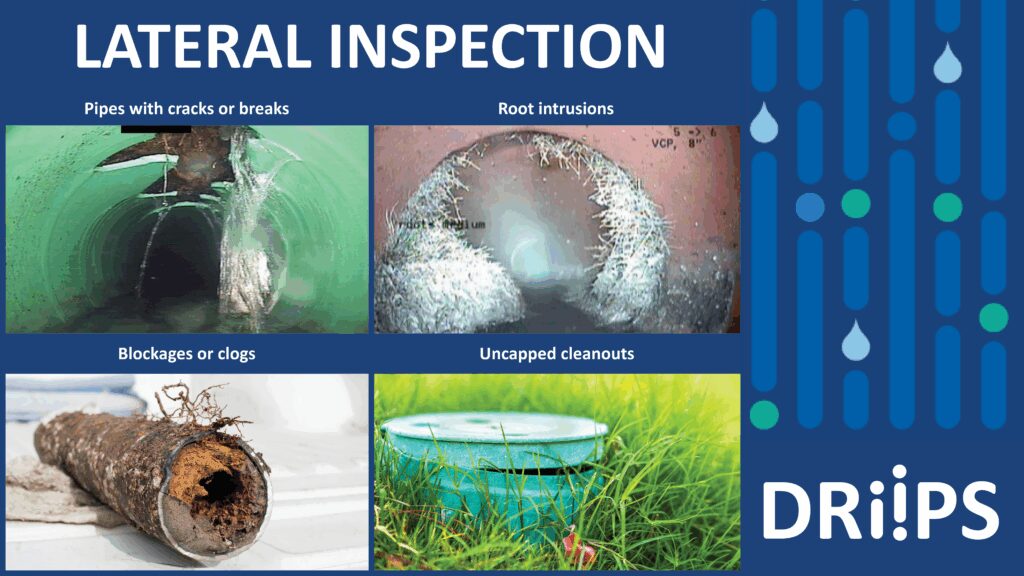
- Social graphic – inspection: 1×1 square png
- Social graphic – inspection: 16×9 landscape png
Social copy – inspection option A:
When do people know there’s a problem with their laterals? When there’s a back-up.
–> If you live in a house built before 1980, chances are that you have a clay or cast iron lateral. Either one should be cleaned every year.
–> If you have a tree sitting over your lateral, it’s also important to televise (examine via video) or clean your lateral annually.
But, cleaning doesn’t stop any infiltration you may have from a cracked pipe or a poor connection point. So, inspect your laterals regularly: madsewer.org/lateral
Social copy – inspection option B:
When do people know there’s a problem with their laterals? When there’s a back-up. Inspect your lateral to prevent issues. #DRIIPS madsewer.org/lateral
Sump Pumps and Setup
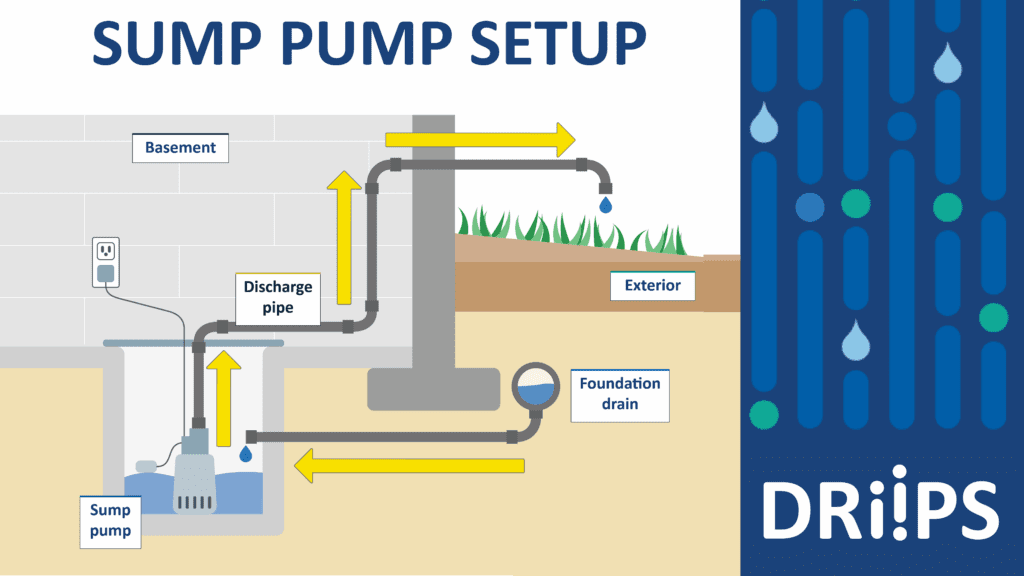
- Blog article: What is a sump pump?
- 1-page flyer: Sump Pumps
- 1/3-page billing insert: Sump Pumps (3-up on page)
- Social graphic – setup: 1×1 square png
- Social graphic – setup: 16×9 landscape png
Social copy – setup option A:
Sump pumps protect properties from flooding and water damage by removing water from basements. But they require proper setup. Ensure your sump pump discharges outdoors to the environment and not into the sanitary sewer system. #DRIIPS madsewer.org/sumppump
Social copy – setup option B:
Sump pumps are a great way to protect basements from flooding and water damage. But they require proper setup. #DRIIPS Learn more: madsewer.org/sumppump
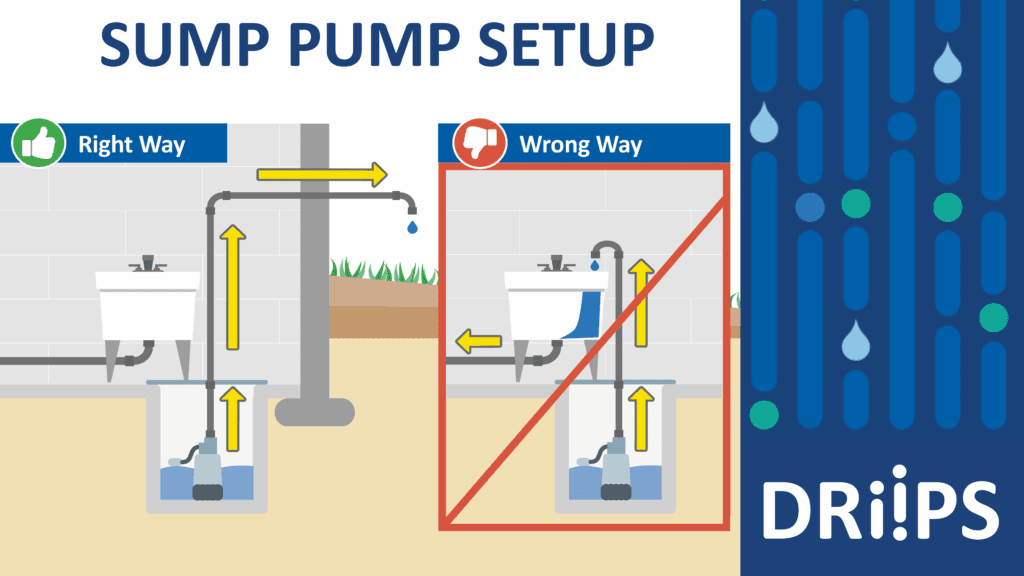
- Social graphic – connections: 1×1 square png
- Social graphic – connections: 16×9 landscape png
Social copy – connections option A:
One incorrectly installed sump pump adds up to 7,200 GALLONS EACH DAY of clear water to the wastewater system unnecessarily – that’s about the size of a residential swimming pool. #DRIIPS
Ensure you have correct connections: madsewer.org/sumppump
Social copy – connections option B:
Sump pumps should discharge to the environment and NOT into the sanitary sewer system. Keep clear water out of sewers. #DRIIPS madsewer.org/sumppump
Collection and Treatment
- 1-page flyer: Collection and Treatment
- Social graphic: 1×1 square png
- Social graphic: 16×9 landscape png
Social copy – option A:
After you flush, do dishes, shower or use water another way, do you know where the water goes? It enters a private sewer lateral (a pipe that’s the property owner’s responsibility), which connects to a municipal line that collects wastewater from neighborhoods and delivers it to the regional system for treatment. Take a virtual tour to see how Madison Metropolitan Sewerage District cleans wastewater: madsewer.org/virtual-tour #DRIIPS
Social copy – option B:
Where does water go after you flush? See how wastewater collection works: madsewer.org/what-we-do/wastewater-collection/






